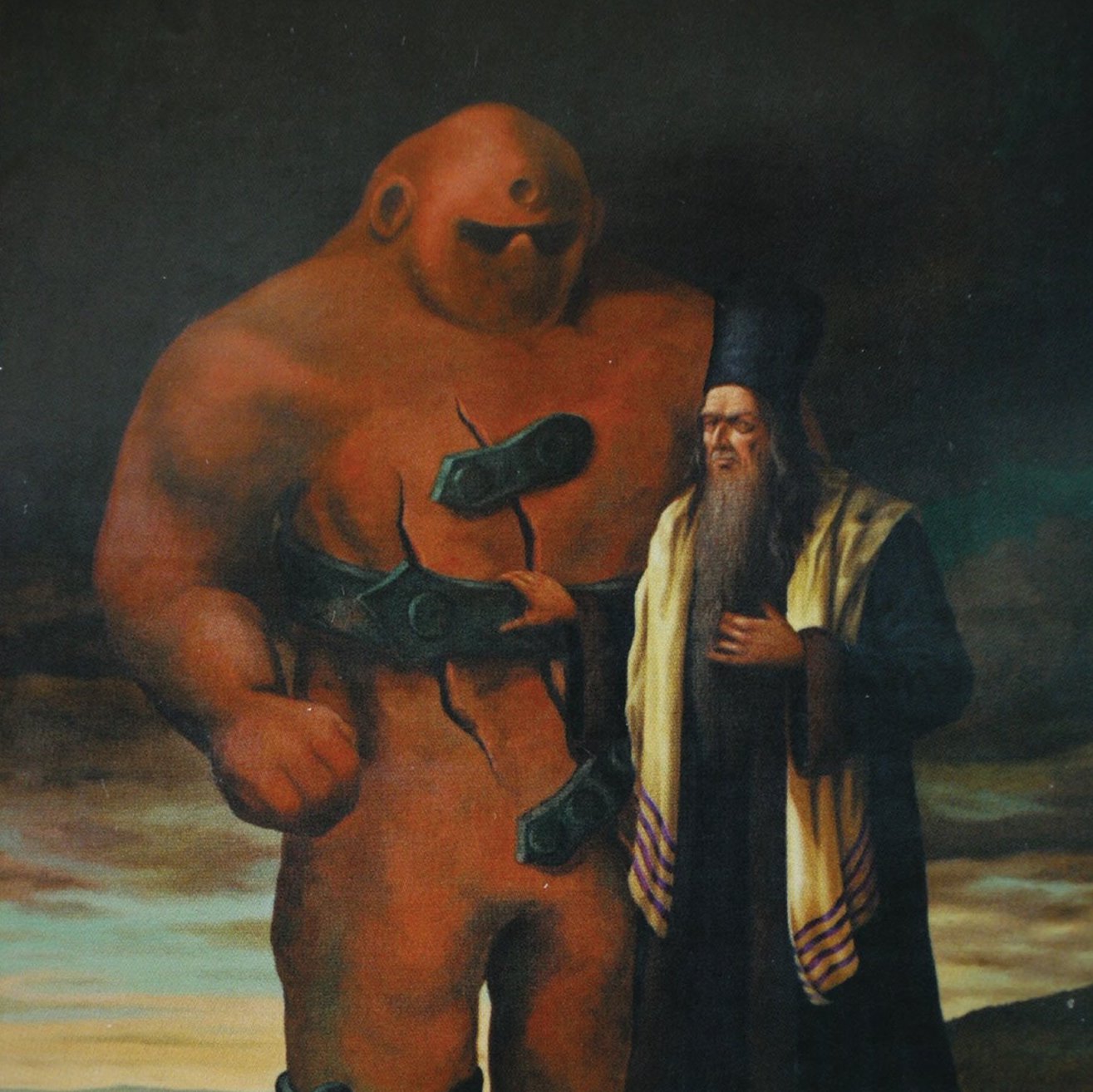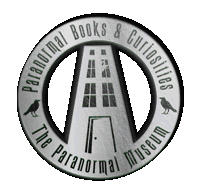
The Golem of Prague
Nothing has inspired me to explore the world the way that reading has. Books and stories have pointed me in the directions I travel. It isn’t necessarily the places that I seek initially, but the feelings of the characters that people them. It’s tricky because there is some fluid interaction between the emotions of people and the places they exist in, the world that surrounds them. The threat of disappointment is high. The location cannot possibly inspire the same emption because I am not that person, and the time is not that time, and the circumstances are not the same. Yet…still..I seek it out.
I have never been disappointed. I have never been successful in finding what I seek, but I have discovered treasure much more significant than that in traveling.
My interests are obscure, arcane, even weird to some. To others, they are merely silly. But to me, they are the crack through which the light of personality and intimacy are seen. I go to the darker places, the places of death and misery and ghosts. The ghosts of the living, the ghosts of the dead, I go to the haunted places. I have seen my share of ghosts in these places. Not the literal kind, but the real kind. The memory that stands at attention in front of you awaiting its due. The breath that gets held unconsciously awaiting a footstep that never landed.
I am a tourist. I am happy to be a tourist.
Prague is an interesting city. If you listened to my earlier podcast, you no doubt heard me wax poetic about its ancient nature.
I very much like Prague and enjoyed its beauty and history. While there, I met an old man named Mika. He was everything you could want in a guide. He was charming and funny, and he seemed to be entirely from another time. He was almost a stereotype, but he was real.
Mika had lived in Prague his whole life. He was 75 years old and remembered the years after WWII. He grew up with the stories of the Nazi’s and how good they treated Prague. He had lived through the years of communism. Mika had circumspection about him. Await and see…this too shall pass..vibe. At the latter stages of his life, he has seen much and is content to see more.
Mika walked us through the usual parts of Prague, The “hot spots.” Discerning an interest in the more arcane, he asked me what my greater interest was, and I quickly said the Golem.
Prague is famous for its Golem. At least I thought so. And Prague is proud of its Golem.
A golem for those of you unfamiliar with the term is a creature of Jewish lore. It is a creature formed of clay and granted a sort of life through magic.
Man was made of clay in many religions and cultures. But man was granted intellect and voice. The Golem, on the other hand, was not. It was activated and deactivated using a powerful word written on a scroll and placed, in the case of the Golem of Prague, in its mouth. A rabbi then would control the Golem.
Prague is home to one of the oldest continuously operating synagogues in Europe. Alongside it is the oldest Jewish Cemetery. I highly recommend a visit. Buried beneath the medieval stones in a small plot of land in the city proper are over 100,000 people. Jewish custom demands that graves are kept sacred and bodies not be moved. To satisfy this requirement and to allow for new burials, dirt was brought it, placed atop old graves, and new graves dug afresh. The Cemetery is several feet above street level, having layers upon layers of the deadlifting the earth like the tide lifts a boat.
The Cemetery escaped the Nazi’s simply because it was so old, so ancient and because the local Jewish Museum was so well run. Fully expecting that their work would lead to the eradication of all Jews, the museum, the Cemetery, and the Synagogue were allowed to survive as relics to a lost race. They were intended to be the last remaining evidence that Jews had ever existed. Instead, they are monuments to their incredible bravery and will to survive.
The Cemetery was in operation from the 14th century to the 18th century. The gates are strong, the stones, beaten by storms of centuries, tilt and slant, and yet still stand. It is a remarkable sight and worth a walk through the Jewish Quarter.
Buried in the Cemetery, deep within its bosom, is Rabbi Judah Loew ben Bezalel. He is essential to our story because, according to legend, he created the Golem of Prague.
Christians built the Synagogue, dating back to the 14th century. Jews of the time prohibited from building, so they had to hire Christian workers to make their homes and places of worship. The imposing Gothic structure is the centerpiece to Jewish Town in Prague. Tourists flock there. It is ancient and incredibly well preserved. The Jewish Museum houses hundreds of artifacts, including a carved tombstone that dates to the 5th century.
The Cemetery is a huge part of the culture in Prague, whether one knows it or not. The Nazi’s took old tombstones from the Cemetery and used them as slabs for roadways and sidewalks. To this day, they remain there. It was an intentional slight. The Nazis used the disrespect of the dead to humiliate and threaten the Jewish population… In Prague, the Nazi’s were careful to keep the Christian public unaware of what was happening in other german-occupied places. The factories of Prague were necessary, and the resources mined imperative to the Nazi plan.
“My parents never believed the stories they heard of the holocaust,” Mike told me, ” The Nazis were always so polite and careful to the workers of Prague.”
It is a testament to how different the world can be for people occupying the same space. Jews persevered in Prague, but it was never an easy process.
Around the corner for the Synagogue is a restaurant called The Golem, and out front is a giant 7 foot roughly anthropomorphic shaped creature. Its head sits atop broad shoulders with no discernible neck. It is thick and wide and vaguely menacing.
The Golem is a character fully embraced by the people of Prague today. There are charming stories told and children’s books published in the tale. The Golem itself is terrifying. The idea of the Golem is even more so. Finally, the purpose of the Golem is even more than that.
The Golem of Prague was created, according to legend and local history, by Rabbi Lowe in the late 16th century to protect the local community from the “Blood Libel” that occurred. From the Middle ages to the 20th century, Christian communities accused Jewish neighbors of murder for the sake of collecting Christian blood for use in Jewish ritual, particularly during Passover. These accusations were taken very seriously and often resulted in horrific violence, including pogroms and attacks on whole populations. According to the legend, a Jewish man was accused of murdering a gentile child to use its blood. Rabbi Lowe, desperate to protect his people, resorted to ancient and powerful magic. Creating a Golem required an extremely learned and knowledgable practitioner of Kabbalah.
Robert Zucker writes in “How to create a Golem ” “Was the golem human? According to the rabbis, this creature had the same life force of any animal or living being, but it did not possess the same level of intelligence as humans. Stories about the Golem’s life describe the creature being dumb, unable to speak, but capable of understanding basic instructions. There are many discussions among the rabbis over the centuries about the attributes of this man-made creature.”
Rabbi Lowe created him to be large and imposing. It had eyes and facial features but would not be confused for a man. It was 8-9 feet tall and abroad as two men across. It would walk the streets at not, protecting the inhabitants of Jewish Town from potential marauders and attackers. Like all great powerful weapons, however, the Golem was dangerous too as it could, and did, deviate from its expected actions, much like the famous trope of the West, Frankenstein’s monster.
Some believe that the Golem was amongst the German ghost stories the Shelley’s & Lord Byron read (along with Clair & Polidori of course) on Lake Geneva. Those storming and interminable nights brought the world Frankensteins Monster and the oft-copied gentlemen and profligate vampire Lord Ruthven. There are certainly commonalities.
The Golem, an early German Silent film, is one of the first to address anti-Semitism and the persecution of Jews. It uses the story of Prague in the 16th century to illuminate the historic and growing resentment and intimidation of the Jewish people.
Joseph, the Golem of Prague, had been created using powerful kabbalistic magic. His strengths and powers were different in different tellings. To some, he could become invisible or summon the ghosts of the dead to assist him. According to legend, the Golem was created to protect the Jewish citizenry and would walk the streets each night. His primary function was to walk the streets each night, vigilant, protecting the citizens of a Jewish town from the unfair and vicious attacks of frightened and angry Christians. He was imbued with life by powerful incantations and rituals. In other stories of other golems, they could be directed to do the things that Jews were not permitted to do because of sabbath restriction. However, Joseph rested on the Sabbath. Rabbi Lowe deactivated him by taking the chem from his mouth on Friday evenings.
In some versions of the story, Joseph was so lifelike that he fell in love and suffered rejection. In others, he became angry at the world he saw and became violent. At one point in each version of the tale, the Rabbi neglected to remove the incantation, leaving Joseph to roam on the Sabbath.
With this, the control of the Rabbi was weakened, and it was only with great exertion that the Rabbi was finally able to contain the Golem and force the scroll from him. Joseph’s strength and power were terrifying to the congregation. When finally the Rabbi was able to rest the scroll from him and deactivate him, he was placed in the attic of the Synagogue. Joseph was a weapon whose power the congregants feared to unleash on the world again. They were wary of losing control of him, and he remains in that attic, awaiting a time when the Jewish people need this power.
To this day, devout believers say that this is no story of folklore but historical fact. There is a door about 25 feet from the ground on the Synagogue. No staircase or ladder reaches it, but it is said that this door is the entryway to the room of the Golem. The children of Prague know, just know that he rests there, waiting for a powerful Rabbi to bring him back to life.
Some say the Golem was stolen and placed in a cemetery on the outskirts of town during WWII, hidden. Another legend has a Nazi agent being sent to the Synagogue to destroy the Golem only to disappear on his mission and never be seen again.
It may seem silly to us, but there is a modicum of belief in even the most secular of person. A caretaker of the Synagogue says, even now, he does not know if the Golem is in the attic. Despite having access to the attic, he has never ventured into it in his 25 years there. The creature, he says, has been there for 400 years, and he sees no reason to disturb it now.
Is it so strange that a people so hounded by outside forces, so persecuted and so violated, would seek a powerful if unpredictable ally? The idea of a stalwart defender, inanimate and controlled by man, is not unique to Judaic lore, yet there is something incredibly attractive about the Golem. Tied up with the mysticism of Creation and the awesome responsibility of creating a being with power but no soul, so to speak, no moral direction seems irreligious to the outsider, counter-intuitive. Yet, the Golem is like a robot, granted only the morality and ethical direction of its controller.
Imagine that creature today lying in the dust of 4 centuries- a creature made of clay, with mind but no intellect, with breath but no soul waits simply for the right words to be placed inside its mouth. A creature devoid of legacy or of heritage or of loyalty. A monster or a savior? What desperation the people must have felt. What trust the people who followed Rabbi Loew must have had in him. I wonder, who do we trust with that power today?




